As you step into the intricate web of Mexico’s spider kingdom, prepare to be entangled in a world of venomous, large, and unusual arachnids. These eight-legged creatures symbolize a hidden realm of mystery and fascination, where danger lurks in the shadows and beauty is found in the most unexpected places.
From the venomous black widows and brown recluses that send shivers down your spine, to the largest spiders that challenge your perception of size, Mexico holds a treasure trove of arachnid wonders waiting to be unraveled.
But that’s not all, as we delve deeper, we will uncover the peculiarities of the green lynx spider and the woodlouse spider, leaving you craving for more.
Get ready to embark on this captivating journey, where the world of spiders in Mexico will both intrigue and astound you.
Venomous Spiders in Mexico
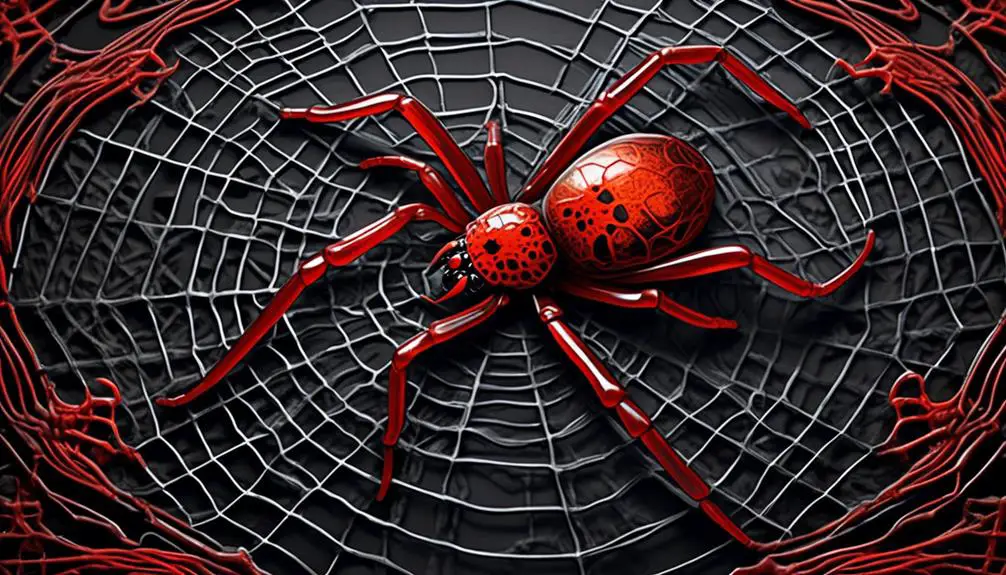
Venomous spiders in Mexico include the black widow spider, brown recluse spider, hobo spider, and false widow spider. These species are known for their potent venom and pose a potential threat to humans.
The black widow spider, scientifically known as Latrodectus mactans, is easily identifiable by its shiny black body and red hourglass-shaped mark on the abdomen. Its venom contains neurotoxins that can cause severe pain, muscle cramps, and, in rare cases, even death.
The brown recluse spider, or Loxosceles reclusa, is characterized by its violin-shaped marking on the cephalothorax. Its venom contains a cytotoxin that can cause tissue necrosis and, in some cases, systemic symptoms.
The hobo spider, or Eratigena agrestis, is often mistaken for the brown recluse spider due to its similar appearance. Its venom contains a mixture of toxins that can cause tissue damage and necrosis.
Lastly, the false widow spider, or Steatoda nobilis, resembles the black widow but lacks the characteristic hourglass marking. Its venom is less potent but can still cause localized pain and discomfort.
It’s important to exercise caution and seek medical attention if bitten by any of these venomous spiders in Mexico.
Largest Spiders in Mexico
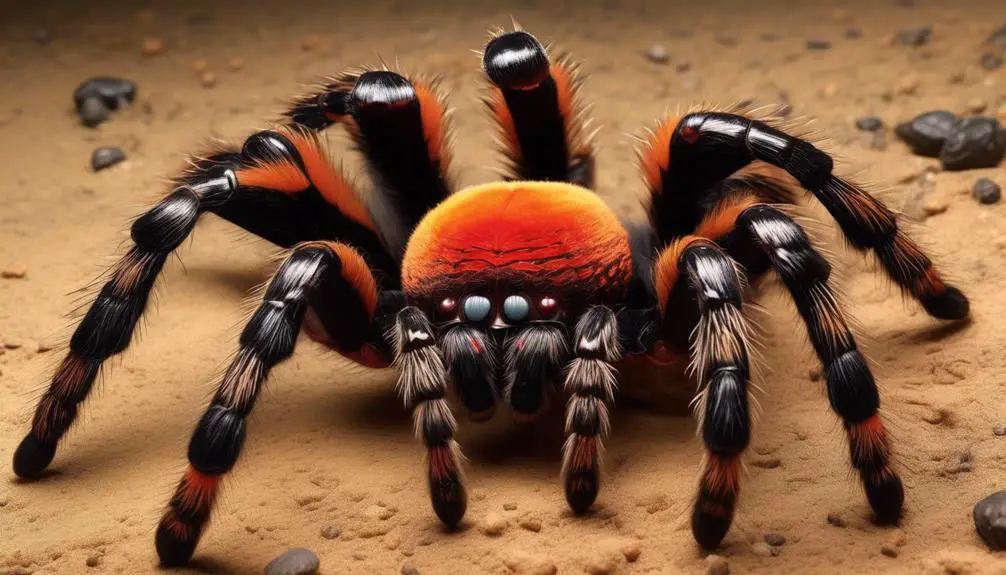
The largest spiders in Mexico can be found in various regions throughout the country. These spiders are known for their impressive size and fascinating characteristics. Two of the largest spiders in Mexico are the Mexican wandering spider and the red kneed tarantula.
| Spider Name | Scientific Name | Size |
|---|---|---|
| Mexican wandering spider | Phoneutria spp. | Up to 5 inches in leg span |
| Red kneed tarantula | Brachypelma smithi | Up to 6 inches in leg span |
The Mexican wandering spider, also known as the banana spider, is known for its aggressive behavior and potent venom. It can reach a leg span of up to 5 inches and is often found in tropical regions of Mexico. The red kneed tarantula, on the other hand, is a large and colorful spider with a leg span of up to 6 inches. It is commonly found in the central and western parts of the country.
These spiders play important roles in the ecosystem, controlling populations of insects and other small animals. While their size may be intimidating, they generally pose no threat to humans unless provoked or handled improperly. It is important to admire these magnificent creatures from a safe distance and appreciate their unique place in Mexico’s diverse spider population.
Green Lynx Spider
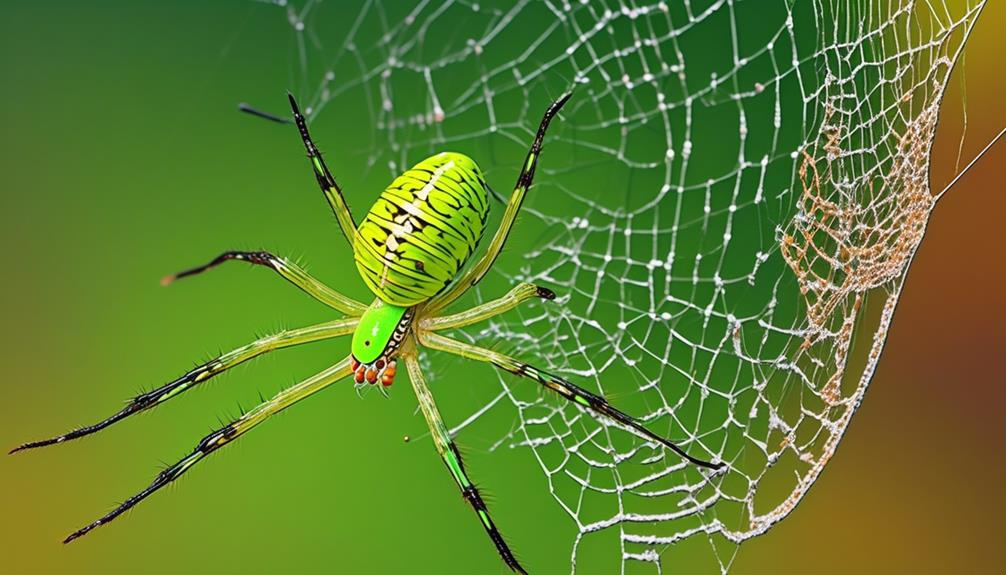
Continuing our exploration of Mexico’s fascinating spider species, let’s now turn our attention to the Green Lynx Spider, known for its distinctive appearance and behavior.
The Green Lynx Spider, scientifically known as Peucetia viridans, can be easily identified by its vibrant green coloration. This spider has a robust body with long legs, and the females are typically larger than the males.
One notable feature of the Green Lynx Spider is its ability to change color. While its vibrant green hue is its most common appearance, it can also turn yellow or brown depending on its surroundings. This color change allows the spider to blend in with its environment, making it an effective predator.
The Green Lynx Spider preys on a variety of insects, including bees, butterflies, and grasshoppers. It doesn’t build a traditional web but instead relies on its excellent eyesight and agility to capture its prey. Once the spider spots its target, it pounces with lightning speed, immobilizing the prey with its venomous bite.
Although the Green Lynx Spider possesses venom, it isn’t considered dangerous to humans. Its bite may cause local pain and swelling, but serious medical complications are rare. However, caution should still be exercised when encountering this spider, as any bite can potentially cause an allergic reaction.
Woodlouse Spider
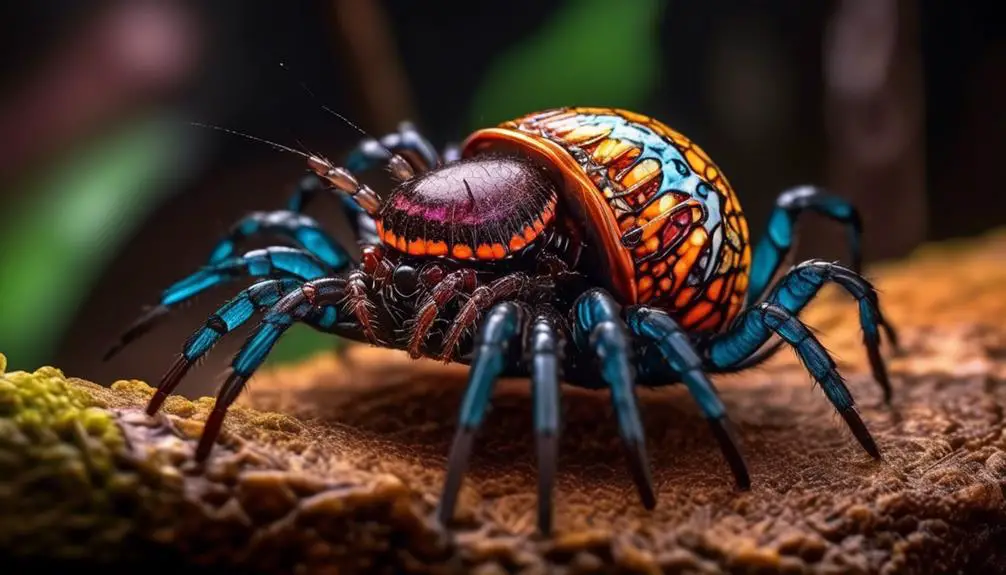
The Woodlouse Spider, also known as Dysdera crocata, is a unique species found in Mexico. It’s known for its distinctive habitat, as it’s commonly found in dark and damp areas such as under rocks or in basements.
Despite its fearsome appearance, this spider is non-aggressive towards humans and will only bite in self-defense. While its bite can be painful and may cause itchiness, it’s important to note that the Woodlouse Spider isn’t venomous to humans.
Unique Habitat and Behavior
Nestled within the unique habitats of Mexico, the woodlouse spider exhibits fascinating behavior and possesses distinct characteristics that set it apart from other arachnids.
Unlike some venomous spiders in Mexico, the woodlouse spider isn’t aggressive towards humans. However, if provoked, it will deliver a painful bite that may cause itchiness. The woodlouse spider isn’t venomous to humans, but its bite can still be discomforting.
This spider prefers dark and damp environments, such as under rocks or logs, where it preys on woodlice and other small invertebrates. It’s known for its ability to curl up its legs and mimic the behavior of a woodlouse, blending in with its surroundings and ambushing its prey.
This unique behavior makes the woodlouse spider a fascinating creature to observe in its natural habitat.
Non-Aggressive Towards Humans
The woodlouse spider, known for its unique habitat and behavior, exhibits a non-aggressive nature towards humans. Despite its intimidating appearance, this spider poses no threat to humans unless it’s provoked or feels threatened.
The woodlouse spider is typically found in dark and damp environments, such as under logs or rocks, where it preys upon woodlice and other small invertebrates. It’s important to note that while the woodlouse spider’s bite may be painful, it isn’t venomous to humans.
The spider’s non-aggressive behavior towards humans is a result of its natural inclination to avoid confrontation and preserve energy for hunting. As such, encountering a woodlouse spider shouldn’t be cause for alarm, but rather a chance to observe and appreciate the fascinating world of arachnids.
Painful but Non-Venomous Bite
When bitten by a woodlouse spider, you may experience a painful sensation, but rest assured, the bite isn’t venomous to humans. The woodlouse spider, also known as the Dysdera crocata, is a unique spider species found in Mexico. Despite their intimidating appearance, woodlouse spiders aren’t aggressive towards humans and rarely bite unless provoked. If a bite does occur, it can cause localized pain and potential itchiness. However, it’s important to note that the woodlouse spider’s bite poses no serious health risks to humans.
These spiders are more commonly found outdoors, particularly in damp areas such as under rocks or logs. Understanding the woodlouse spider’s non-venomous nature can provide reassurance when encountering this species in its natural habitat.
Tarantulas in Mexico
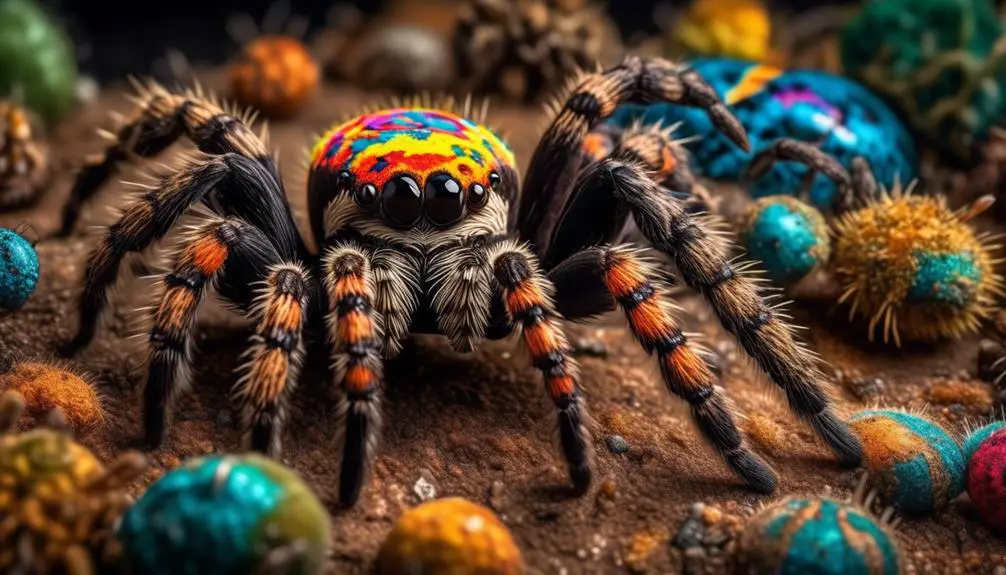
Tarantulas in Mexico are a common sight due to the country’s favorable habitat for these large, hairy spiders. Mexico is home to several species of tarantulas, including the Mexican red-kneed tarantula (Brachypelma smithi). These spiders are known for their striking appearance, with a black body and bright red or orange knees. They can grow to be quite large, with a leg span of up to 6 inches.
Tarantulas are typically found in a variety of habitats throughout Mexico, including deserts, forests, and grasslands. They’re skilled burrowers and often create intricate underground homes. These burrows provide protection from predators and help regulate temperature and humidity levels.
Despite their intimidating size and appearance, tarantulas are generally harmless to humans. Their venom is relatively weak and primarily used to immobilize their prey. While a tarantula bite can cause some discomfort, it’s rarely dangerous and usually only results in mild swelling and pain.
Unfortunately, the population of tarantulas in Mexico is declining due to the exotic pet trade. These spiders are highly sought after by collectors, leading to their capture and removal from their natural habitats. Conservation efforts are being made to protect these fascinating creatures and ensure their continued survival in Mexico’s diverse ecosystems.
Most Dangerous Spider in Mexico

The Brown recluse spider stands out as the most dangerous arachnid in Mexico due to its venomous bite. This spider, scientifically known as Loxosceles reclusa, belongs to the family Sicariidae. It’s a medium-sized spider, ranging from 6 to 20 millimeters in body length, with a distinctive violin-shaped marking on its cephalothorax. Found primarily in the northern regions of Mexico, the Brown recluse spider prefers dark and undisturbed areas such as attics, basements, and woodpiles.
The venom of the Brown recluse spider contains a potent mixture of enzymes and peptides that can cause localized tissue necrosis, leading to a condition known as loxoscelism. Symptoms may include pain, redness, and the formation of a necrotic ulcer, which can take months to heal. In rare cases, systemic effects such as fever, muscle pain, and organ damage may occur.
It is essential to seek medical attention if bitten by a Brown recluse spider. Treatment typically involves wound care, pain management, and, in severe cases, surgical intervention. To prevent encounters with this dangerous spider, it’s advisable to wear protective clothing and gloves when handling objects that have been undisturbed for a long time and to inspect and clean potential hiding places regularly.
Green Lynx Spider Defense Mechanism
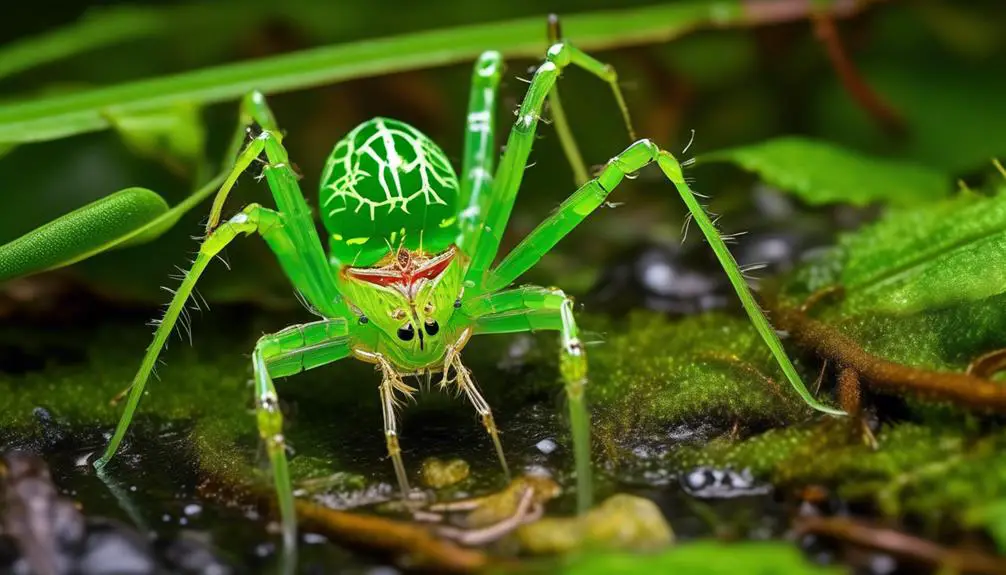
Moving on from the discussion of the Brown recluse spider, let’s now explore the intriguing defense mechanism of the Green Lynx Spider. This fascinating arachnid, scientifically known as Peucetia viridans, possesses several unique strategies to protect itself from potential threats.
One of the most notable defense mechanisms of the Green Lynx Spider is its ability to spit venom. When threatened, the spider will rear up and project its venom towards the perceived danger. This venom isn’t harmful to humans, but it can cause irritation and discomfort if it comes into contact with the eyes or skin. The spitting behavior is primarily exhibited by female Green Lynx Spiders, especially when protecting their egg sacs.
In addition to venom spitting, the Green Lynx Spider also relies on its vibrant green coloration as a form of defense. This species has the remarkable ability to change its body color to match its surroundings, providing it with excellent camouflage. By blending in with the foliage, the spider becomes less visible to potential predators, such as birds or larger insects.
Woodlouse Spider Bite

Woodlouse spiders, also known as Dysdera crocata, have a bite that isn’t aggressive towards humans but can cause pain and potential itchiness. These spiders belong to the family Dysderidae and are commonly found in Europe, North Africa, and North America, including Mexico.
Woodlouse spiders are unique in their appearance, with a reddish-brown body and a flattened shape, allowing them to fit into tight spaces where woodlice, their primary prey, reside. Despite their intimidating appearance, woodlouse spiders aren’t venomous to humans.
When a woodlouse spider bites, it injects saliva into its prey to immobilize it and begin the digestion process. The same saliva is injected into humans when bitten, leading to localized pain and potential itchiness. The bite can be quite painful, comparable to a bee sting, and may cause redness and swelling at the site. However, these symptoms typically subside within a few days without any serious complications.
It is important to note that woodlouse spiders aren’t aggressive towards humans and will only bite in self-defense if they feel threatened. Therefore, it’s best to avoid handling or provoking these spiders to minimize the risk of a bite. If bitten, it’s recommended to clean the area with soap and water, apply a cold compress to reduce swelling, and take over-the-counter pain relievers if necessary. Seeking medical attention is advised if the pain persists or if there are signs of infection.
Mexican Spider Diversity
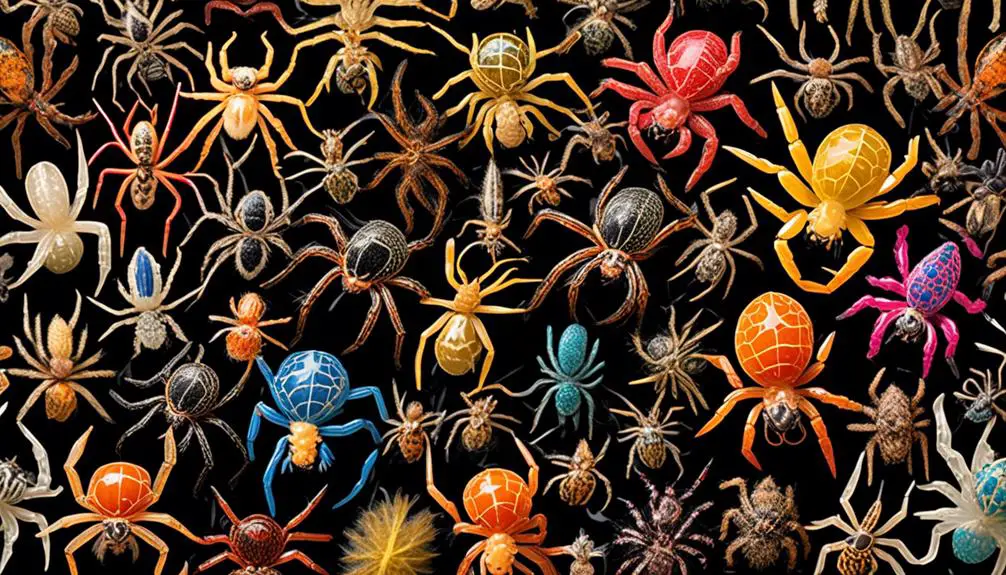
Mexico boasts a rich diversity of spider species, ranging from venomous spiders like the black widow and brown recluse to non-venomous varieties such as the green lynx spider and Mexican wandering spider. This diversity is a result of Mexico’s varied ecosystems, including deserts, rainforests, and mountains, which provide habitats for a wide range of spider species. The table below highlights some of the notable spider species found in Mexico:
| Venomous Spiders in Mexico | Largest Spiders in Mexico |
|---|---|
| Black widow spider | Mexican wandering spider |
| Brown recluse spider | Red kneed tarantula |
| Hobo spider | |
| False widow spider |
As shown in the table, Mexico is home to venomous spiders like the black widow and brown recluse, which pose a threat to humans. On the other hand, the Mexican wandering spider and the red kneed tarantula are among the largest spiders found in Mexico. These spiders play important roles in the ecosystem by controlling insect populations and aiding in the decomposition of organic matter. Additionally, the green lynx spider is known for its distinctive appearance and behavior, including its venomous bite, although it is not dangerous to humans. Overall, the diverse spider species in Mexico contribute to the unique biodiversity of the country.
Spider Habitats in Mexico

With its diverse ecosystems providing a range of habitats, Mexico offers a variety of environments that cater to the diverse spider species found within its borders. From the lush rainforests to the arid deserts, spiders have adapted to thrive in different ecological niches.
In the tropical rainforests of southern Mexico, you can find a wide array of spider species, including the venomous black widow and the large Mexican wandering spider. These spiders take advantage of the dense vegetation and abundant prey found in this habitat.
Moving north, the arid regions of Mexico are home to the hardy desert-dwelling spiders, such as the woodlouse spider. These spiders have unique characteristics that allow them to survive in the harsh desert environment, where food and water resources are scarce.
Additionally, Mexico’s mountainous regions provide habitats for tarantulas, like the red kneed tarantula, which can be found in the Sierra Madre Occidental.
Spider Reproduction in Mexico
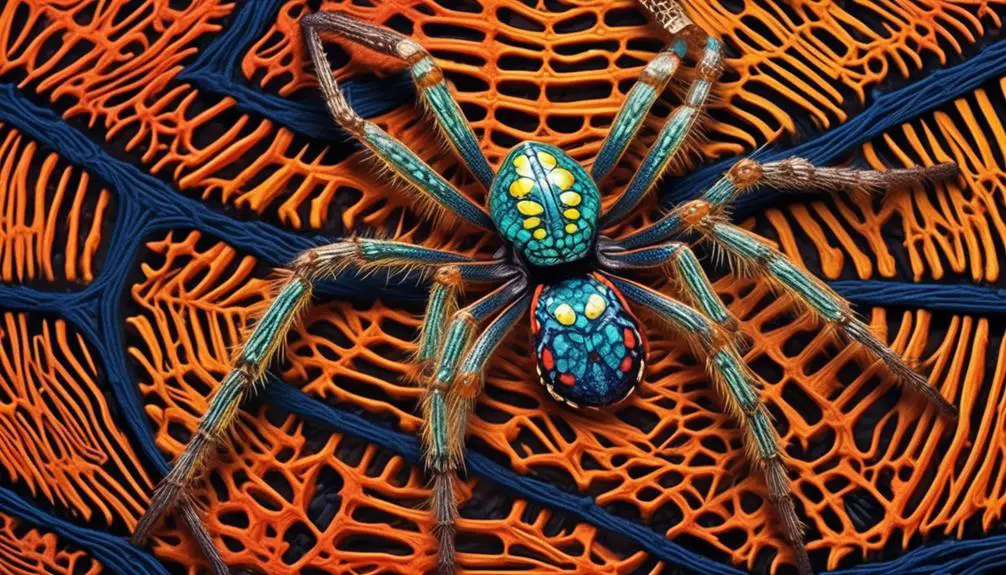
Spider reproduction in Mexico involves intricate mating behaviors and reproductive strategies that vary among different species. To understand the diversity of spider reproduction in Mexico, let’s take a closer look at some notable species and their reproductive characteristics.
| Spider Species | Reproductive Characteristics | Notable Behavior |
|---|---|---|
| Black widow spider | Females produce egg sacs containing hundreds of eggs. Males perform a courtship ritual before mating. | Female black widow spiders are known for their venomous bite. |
| Mexican wandering spider | Females lay eggs in silk nests and guard them until they hatch. Males perform elaborate dances to attract females. | The Mexican wandering spider is considered one of the largest and most venomous spiders in Mexico. |
| Red kneed tarantula | Females create silk-lined burrows where they lay their eggs. Males approach females cautiously to avoid being mistaken for prey. | The red kneed tarantula is famous for its striking appearance and docile nature. |
| Green Lynx spider | Females lay eggs on plant foliage and protect them until they hatch. Males approach females cautiously to avoid being mistaken for prey. | Green Lynx spiders are known for their bright green coloration and their ability to spit venom as a defense mechanism. |
| Woodlouse spider | Females lay a single egg sac and guard it until it hatches. Males often engage in combat to compete for mating opportunities. | Woodlouse spiders have unique characteristics and prefer damp habitats, but they are not aggressive towards humans. |
Spider Conservation in Mexico

When it comes to spider conservation in Mexico, various efforts are being made to protect spider habitats.
Conservation organizations are working to preserve the natural environments where spiders reside, ensuring that their habitats aren’t destroyed or disrupted.
These efforts aim to maintain the biodiversity of spider species in Mexico and protect their important roles in the ecosystem.
Conservation Efforts in Mexico
Mexico has implemented various conservation efforts to protect the diverse spider species found within its borders. One such effort is the establishment of protected areas and national parks, which serve as sanctuaries for spiders and other wildlife. These protected areas provide suitable habitats and help prevent habitat destruction due to human activities such as deforestation and urbanization.
Additionally, Mexico has implemented regulations to control the illegal trade of spiders and their derivatives. This helps prevent the overexploitation of spider populations for the exotic pet industry. Education and awareness programs have also been developed to promote the conservation of spiders and their importance in maintaining ecological balance.
Protecting Spider Habitats
With a focus on preserving the delicate ecosystems that spiders rely on, Mexico has implemented a range of initiatives aimed at protecting and conserving their habitats.
The Mexican government has established national parks and protected areas to safeguard the diverse habitats where spiders thrive. These protected areas serve as safe havens for spiders and other wildlife, ensuring that their habitats remain intact and undisturbed.
Additionally, Mexico has implemented regulations and policies to prevent the destruction of spider habitats through deforestation, urbanization, and agricultural practices.
Efforts are also being made to educate the public about the importance of spider conservation and the role these creatures play in maintaining ecological balance.

Erzsebet Frey (Eli Frey) is an ecologist and online entrepreneur with a Master of Science in Ecology from the University of Belgrade. Originally from Serbia, she has lived in Sri Lanka since 2017. Eli has worked internationally in countries like Oman, Brazil, Germany, and Sri Lanka. In 2018, she expanded into SEO and blogging, completing courses from UC Davis and Edinburgh. Eli has founded multiple websites focused on biology, ecology, environmental science, sustainable and simple living, and outdoor activities. She enjoys creating nature and simple living videos on YouTube and participates in speleology, diving, and hiking.

